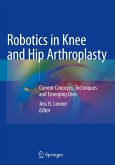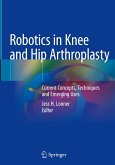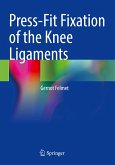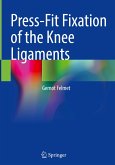Spanning both the history and future of knee replacement, this unique book recounts how artificial knees have reached the stage they are today, and whether their performance can be further improved. The author, who has been designing artificial knees for 50 years, starts the story in the late 1960's with the early pioneers; during the 1970's, the principles for successful artificial knees were established. While many different types were designed, a small number have become by far the most widely utilized. Yet other types of designs, so far little used, along with new materials and the application of computer-assisted surgery, could result in significant advancements in the treatment of knee arthritis.
Each chapter provides a detailed description of the origins of the ideas and principles and their rationale, followed by the latest information and evidence. The book begins with an overview of the history and background of the artificial knee, in terms of design and implementation and the thought leaders involved. Fixation, biomechanics, and the types of designs are discussed in detail, both what has worked and what has not, and why. Instrumentation, testing and tribology, and functional evaluation methods are also covered. The book concludes with a look toward the future possibilities for the field of artificial knees. An illustrated glossary of terms, is included for quick reference.
The Artificial Knee: An Ongoing Evolution will appeal to orthopedic surgeons and researchers, medical academics and orthopedic companies, and to those with a general interest in artificial knees.
Each chapter provides a detailed description of the origins of the ideas and principles and their rationale, followed by the latest information and evidence. The book begins with an overview of the history and background of the artificial knee, in terms of design and implementation and the thought leaders involved. Fixation, biomechanics, and the types of designs are discussed in detail, both what has worked and what has not, and why. Instrumentation, testing and tribology, and functional evaluation methods are also covered. The book concludes with a look toward the future possibilities for the field of artificial knees. An illustrated glossary of terms, is included for quick reference.
The Artificial Knee: An Ongoing Evolution will appeal to orthopedic surgeons and researchers, medical academics and orthopedic companies, and to those with a general interest in artificial knees.








